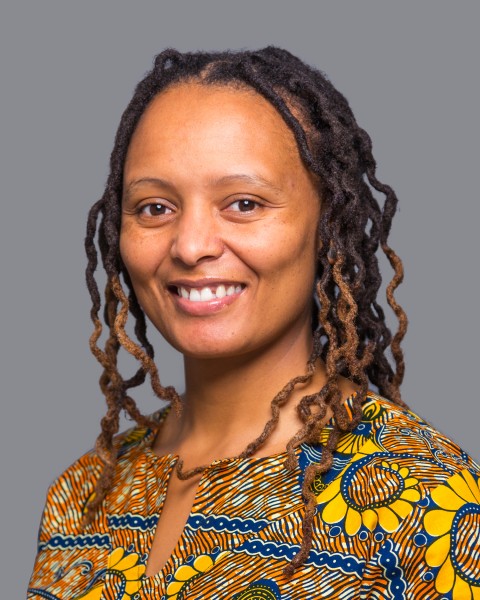Share post now
Opinion
The gendered impact of mining
13.06.2023, International cooperation
What happens when mining companies enter communities and start mining? Who benefits and who suffers?

Women push wheelbarrows onto the stockpile of a coal mine at the Duvha coal-fired power station, east of Johannesburg.
© Denis Farrell / AP Photo / Keystone
A report was commissioned by Fastenaktion in 2022 on the gendered impact of mining on workers and mining communities. Using a gender lens, and focusing on Mtubatuba in South Africa, the report maps the differentiated impact of mining as experienced by those who work and live around mine sites.
In Somkhele, where one of South Africa’s largest open-pit anthracite coal mines (Tendele) is located, people’s lives are characterised by dispossession, removal and displacement from ancestral lands, violent demolition of homes, exhumation of ancestral graves, unsympathetic reburials that ignore rituals and culture, and disregard for the dead and ancestors. Crops and livestock are dying because water, soil and air are contaminated. This has led to a displacement of livelihoods and people’s sense of identity. Grazing fields are disappearing as the mine expands and marks communal land as private property. Catastrophic environmental destruction is evident and undeniable after every blast at the open-pit coal mine, as the entire village is enveloped by coal smog, which disrupts social routines in Somkhele.
The environmental destruction is generalised across the villages, as evidenced by contaminated and destroyed water sources, vegetation and soil, and is leading to dire food insecurity and poverty. Additionally, toxic dust results in severe and debilitating health challenges for workers and community members. These include respiratory, eye and skin diseases, affecting both young and old. Parents talked about their children having sore and watery eyes, painful chests and throats, runny noses, headaches, and sinusitis. Traditional healers, who are the first point of call when villagers are sick, can no longer find the herbs they have relied on for generations to heal the sick. Important local herbs and trees have been cut down to make way for the mine and those still able to grow are covered in coal dust which renders them useless.
Those who get jobs in the mines, mainly men, reported working conditions that are not decent. At Tendele mine, most workers are hired through subcontractors and not directly for the mine. Subcontracting has become a cheaper way of organising production as it relegates some of the responsibilities, including statutory obligations, to third parties who often ignore or undercut legal, labour, health, and safety requirements. Characterising the lives of miners, who are mainly men, is over-exploitation at the point of production, low wages, weak-to-no trade union representation, and health and safety challenges. Workers are often encouraged to chase production targets at the expense of their own health and safety. They face arbitrary dismissals, and most lack proper union representation. Without a voice, their associational and bargaining power and workplace citizenship are compromised.
Women absorb the shocks
The impact of the above working conditions on workers and living conditions in communities is distributed in disproportionately gendered ways. In communities, women disproportionately absorb the shocks and externalities since they are socially and culturally tasked with care work and other domestic tasks such as providing food for the family and ensuring that the household sphere is functioning optimally. In the workplace, by virtue of their numerical dominance, men face the brunt of the negative externalities, as they are at the heart of the exploitative system. Men who contract pulmonary diseases are easily purged by the mine based on precarious work contracts. There is little care for their physical health and their ailing bodies after giving the best years of their lives to the mine, and even less care for their deteriorating “invisible” mental health caused directly by their feelings of uselessness due to their inability to provide for their families. These mental health struggles manifest themselves as violence, but that too is disregarded, as violence and tropes of black masculinity have been treated as synonymous for so long.
The sick men, who often carry transmissible diseases, are sent home to be cared for by wives. This is a huge financial cost to families, who frequently have to sell livestock and redirect family savings towards the sick husband’s health care bills. Wives mend what is broken and pick up the pieces from deteriorating health, feelings of failure due to inability to put food on the table in the context of dispossessed ancestral lands, and self-loathing by the now abandoned former miners. Wives and girl children take care of the now sick former miners, and as they pick up the pieces of their dignity and self-worth, they also pick up the diseases that miners bring with them from working on the coalface. At times, they too fall ill, and the cycle continues, or ends when the miner dies.
The general sentiment from interviews and focus group discussions is that the mine has created or heightened poverty in families that were once self-reliant. Only a handful of political elites, local petit bourgeois – the contractors who have mine tenders, truck and taxi owners – a minority, have benefitted. Even for them, things remain precarious, and the cost they pay through their health, land and graves of ancestors is far higher than what they have been able to eke out through mine contracts. In interviews, we consistently heard people say: “They took our land and gave us R420 000 (less than CHF 20 000), diseases, poverty, and a cleaning job”. This, after giving up or being forcibly removed from tracts of ancestral lands. They asked, “How can the mine take away everything that fed us, and only give one person a contract job?” There is thus a resentment in the community, and it manifests itself in protests directed at the mine. These protests, both at work and in the community, have been marked by violence, intimidation of local activists and the assassination of anti-mining and worker activists.
Global solidarity is critical
In conclusion, while mining has been central in shaping South Africa’s social, economic, and political landscape, in the main, experiences of workers and communities have not been positive. The ‘benevolence’ of mining companies and their public relations machinery, which churns out reports with hyper-positive narratives about the impact of mining on economic growth, has not addressed or prevented harm. People’s rights to life, safety, food, water, housing, culture, and to a safe environment have all been undermined. The environmental, social and cultural impacts require urgent and honest attention from those in power. People need avenues of recourse. The mines and the State, in collusion with traditional authorities, cannot continue without being held accountable for the crimes committed in these communities by mining capital. Global solidarity from like-minded organisations and activists is critical, since many other communities across the Global South are facing similar harm from large-scale, global mining companies.

© Asanda-Jonas Benya
Asanda-Jonas Benya is a sociologist at the University of Cape Town, South Africa, and currently a visiting lecturer at the Graduate Institute in Geneva.